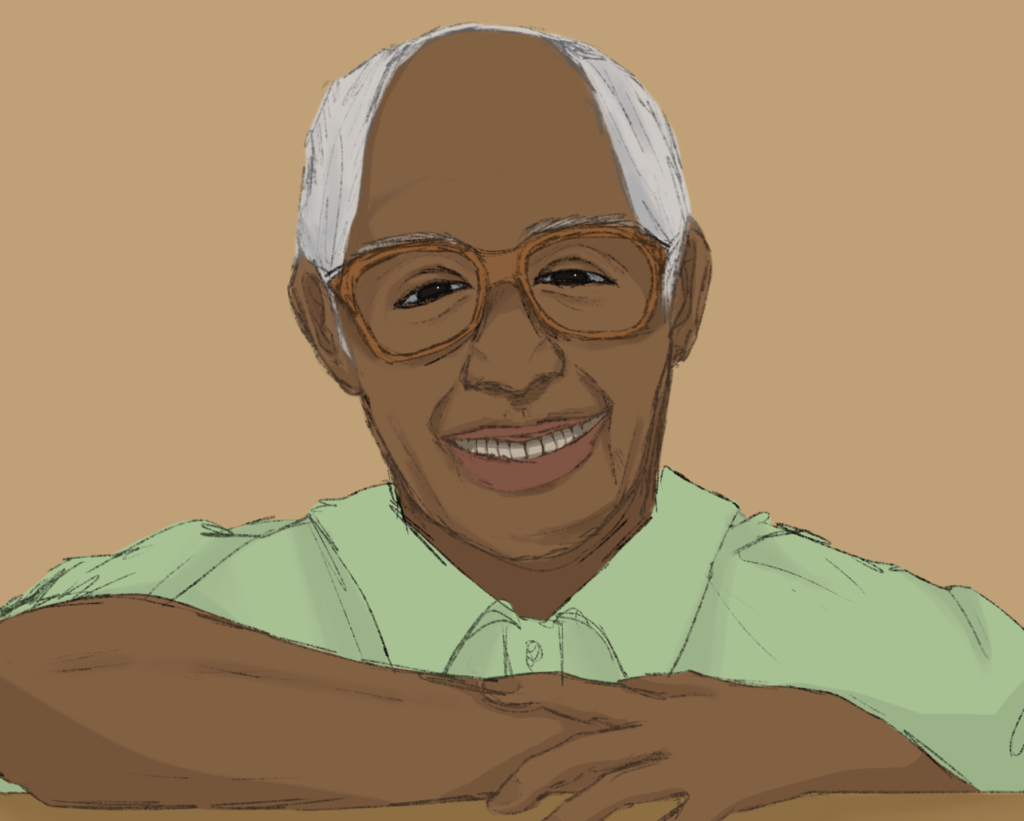
After a 48-year-long hiatus, writer Joyce Maynard returned to Yale this past fall for her sophomore year. Photo courtesy of Jim Barringer
Plenty of college students take time off from school. But few can match the nearly 50 years that Ms. Joyce Maynard, now a 66-year-old sophomore at Yale, took between her first and second years in college.
A renowned American novelist and journalist, Ms. Maynard began her career writing first for Seventeen magazine and eventually the New York Times, contributing personal essays and feature articles while living in New York, New Hampshire, and California.
But it is her essay titled “An 18-Year-Old Looks Back On Life,” published in the New York Times Magazine in the spring of 1972, for which Ms. Maynard remains best known. (“As some people prepare for their old age, so I prepare for my 20’s,” she writes with a jaundiced eye.) The essay caught the attention of author J.D. Salinger, himself famously disillusioned, who wrote Ms. Maynard one letter and then another. Ms. Maynard wrote him back, and what started as a mail correspondence evolved into an affair. The relationship lasted only about a year, but the experience of dropping out of Yale to live with a celebrated writer and fabled recluse came to define Ms. Maynard’s career.
Today, Ms. Maynard has returned to New Haven, re-enrolling in the Ivy League university she left nearly five decades ago, taking classes and learning to live as she might have had her life taken a different course.
“I probably will never get a degree,” she said recently. “But I will learn.”
Ms. Maynard’s singular journey began in the small town of Durham, New Hampshire, where she grew up carrying the weight of her parents’ expectations. Ms. Maynard’s mother had earned a Ph.D. in English from Radcliffe College, though, as Ms. Maynard explained, sexism and anti-Semitism precluded her from securing a job.
“She did what a lot of women in that generation did — put their hopes on their daughters,” Ms. Maynard said. “I became very ambitious for her. I wanted my mother to know success through me.” Throughout high school, Ms. Maynard submitted her work to Scholastic writing competitions and came to write regularly for Seventeen.
In 1970, Ms. Maynard left her local public school and entered Phillips Exeter Academy as a senior and a member of the institution’s first crop of female students. (“Here someone else was the newspaper editor, the yearbook boss, the actor, the writer. I was the girl,” she writes in “An Eighteen-Year-Old Looks Back.”)
A year later, when she began her freshman year at Yale, Ms. Maynard spent much of her time alone. She ate meals in her dormitory. She woke up every day at the crack of dawn to write to her family. She felt definitively disconnected from her classmates. (“The idea is not to care,” she writes in the essay. “I feel it most of all on Saturday morning, when the sun is shining and the crocuses are about to bloom and, walking through the corridors of my dorm, I see there isn’t anyone awake.”)
Ms. Maynard may have been outwardly reticent at Yale, but she was learning to be bold in her prose. While at Yale, she regularly took the bus from New Haven to New York to meet with the editors of Seventeen. At one point, she suggested a piece on the Miss Teenage America Pageant. Seventeen liked the idea but wanted her to write from the perspective of having participated in the contest itself. Ms. Maynard had no inclination to be a competitor, so she called the head of the pageant in Fort Worth, Texas, and asked to be a judge.
“I flew to Fort Worth and wore my evening gown, as the judges did,” Ms. Maynard said. “I got to judge all these girls who were my age, but a different kind of girl from me — the girls that I kind of envied in high school — and I wrote my piece.” When Ms. Maynard later read the published article in Seventeen, she discovered that editors had removed her distinctive tone and wit.
Ms. Maynard mailed the filed version of the article to the editor of the New York Times Magazine, with a letter asking if she could write for the publication. She soon received her first assignment: write about what it’s like to be an 18-year-old in America. When “An 18-Year-Old Looks Back On Life” — a funny, clear-eyed, and stunningly precocious essay — was published on April 23, 1972, it changed her life.
“It’s hard for someone in this era to imagine what the impact of a magazine article in 1972 was,” Ms. Maynard said. “There was no internet, and there was no social media. Everybody saw just a handful of things, and the New York Times was one of them. I got hundreds of letters and all the kinds of offers that my mother would have wanted for herself or for me, and that I wanted. But there was this one letter that was totally different. It wasn’t that it was written by J.D. Salinger that moved me. It was just the voice in that letter that seemed to know me in a way nobody had.”
Salinger and Ms. Maynard began to correspond regularly. At the end of her freshman year, Ms. Maynard met him in person. She soon left her summer job at the New York Times and withdrew from Yale to move in with Salinger. “I left the world,” Ms. Maynard said. “I didn’t think about how he’s 53, and I’m 18. I just thought ‘Oh, I’m at home now.’” She added, “I really did believe that I would be with him forever.”
Almost a year after they had been living together, Salinger abruptly asked her to clear her things and leave. “If some man said some of the things Salinger had said to me now, I would think much less of the man.” But, as a teenager, Ms. Maynard said, “you think less of yourself.”
In the following decades, Ms. Maynard moved around, married twice, had a family, and kept publishing (including a 1976 piece in the New York Times on the recent merger of The Choate School and Rosemary Hall). She rarely spoke about her affair with Salinger. But when her daughter turned eighteen, in 1996, Ms. Maynard felt compelled to break her silence. In 1998, she published a memoir, At Home in the World, which discussed the relationship. Literary critics pilloried Ms. Maynard for exposing Salinger’s idolized life. One publication called the book a “tawdry, boudoir confession.”
“I did not anticipate that it would be such an outcry against me,” Ms. Maynard said. “It was a moment when I had to really reassess who I was. I had always been a very good girl, and I cared a lot about pleasing and accepting. I followed Salinger’s rules, but I broke them when I was 42 years old. I told this story, and I was not a good girl anymore.”
She went on, “I could either adopt their — the New York Times’s and the critics’ of just about every newspaper in the country — view of me, or say, ‘Well, I’m not going to take my definition of who I am from them,’ which is what I chose to do.”
Because of the criticism surrounding the book’s publication, the memoir failed to gain significant traction in the literary world. Years later, Ms. Maynard was surprised to find that Ms. Anne Fadiman, a nonfiction writer and Yale professor, was teaching At Home in the World in her writing workshop. Ms. Maynard wrote to Fadiman and offered to visit the class as a guest speaker.
In 2015, Ms Maynard began visiting New Haven once a year from her home in California. As Ms. Maynard recalled, “When I came back to New Haven, Anne, who is exactly my age, said ‘You have unfinished business at Yale,’ and I just laughed. ‘Me, go to college now? At this age? I’m still paying off my kids’ college, so I didn’t think I’d ever do that.’ ”
Her perspective changed, however, when her husband died of cancer, in 2016. “Suddenly, I thought, well, ‘Who am I now?’ So, I decided to apply to Yale,” Ms. Maynard said.
Ms. Maynard, now in her second year as a Yale undergraduate, is still doing things differently than the typical Yale student. For one, she is not taking a full course load and is auditing many of her classes. She is able to sidestep the anxiety of grade-point averages and grad-school applications. But she listens attentively to lectures, takes notes, and completes the readings.
“When young people at Yale, specifically women, ask me why I left, I will give them the short answer: I left for love,” Ms. Maynard said. “I might as well say that I left because I got the measles.” The Yale that Ms. Maynard attends in 2020 is worlds away from the Yale she attended in the 1970s. She is not only struck by how much students now depend on their devices — during lectures, in the dining hall, on the walkways — but also by a seismic shift in their attitude toward love. “When I was at school in the 70s, it was a very romantic and passionate time,” Ms. Maynard said. “You never see that on this campus anymore.”
Ms. Maynard has also had to learn to become more collaborative at Yale. She has long been accustomed to working on her own. But when a play she wrote was recently chosen for a campus arts festival, she essentially turned the production over to her director. “I didn’t even go to the rehearsals,” she said. “I let go of it, and it was huge for me. A lot of this experience is about letting go.”
Ms. Maynard grew up quickly and publicly. Before she had graduated from high school, she was publishing in magazines and seemed destined for literary stardom. Today, as an undergraduate, Ms. Maynard is finally having the college experience she missed, immersing herself in interesting classes, going to club meetings, acting in a play. She’s also using this time to focus on herself and on personal projects. Eventually, she said, she will write all about it.




